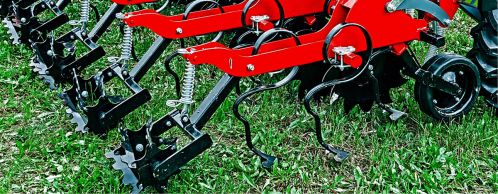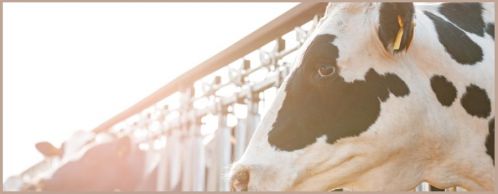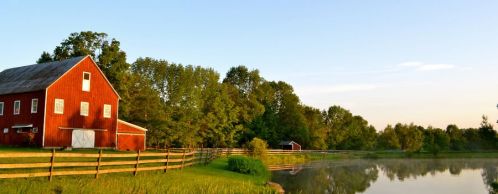
Cover Crops and Soil Health
Article By: Steve Okonek, UW-Madison Division of Extension for Jackson and Trempealeau Counties
Cover crops can bring diversity to production systems that rely on one or two crops. Continuous corn or corn soybean rotation is not diverse in terms of plants growing in the environment. The lack of diversity can be extremely productive, in terms of bushels per acre, but may be costly in terms of soil erosion and nutrient losses out of the system. Adding cereal rye (rye grain, not rye grass) to a corn soybean rotation adds a third crop to the system, even if the rye is terminated before the next cash crop is planted. The living roots in the soil and vegetative top growth protect the soil from erosion and nutrient loss.
Plants give nearly as much food to the soil as they take out in nutrients. Have you ever heard there is no free lunch? This counts for plants as well. Plants take up nutrients and water from the soil to make carbohydrates and protein from photosynthesis for plant growth and development. A significant portion of the products of photosynthesis are transported to the roots and exuded out of the roots to feed bacteria, protozoa, and fungi in the soil near the roots. The bacteria, protozoa, and fungi use the energy from the plant to break down soil particles into plant available forms of nutrients. The smaller soil animals then feed larger soil animals, such as nematodes and earth worms that then feed moles and so on. Most nematodes are beneficial to crop production and only a few are detrimental.
Winter annuals and perennials like rye, wheat, and clover, will remain alive during the winter, feeding soil microorganisms throughout the winter months. During cold weather, plants may become dormant, but the roots are alive in the soil and will become active as the soil warms. In an annual cropping system, corn and soybean plants are slow to establish roots and slow to feed the microorganisms in the soil. This down time can cause soil life to diminish as the roots re-establish themselves in the soil. There is a lag of soil microbiology to colonize the plant roots. This lag in colonization can be the slow growth syndrome we can see in corn and soybean fields early in the spring. Maintaining living roots in soil for as long as possible during the year keeps this food web alive and vibrant, requiring a shorter ramping up period during the spring as our annual crops become established.
Cover crops can help hold nutrients that were not used by the cash crop during the season and prevent those nutrients from reaching ground water or surface water. The cover crop will take up nutrients and use the nutrients to build tissue, releasing the nutrients back to the production system after the cover crop is terminated. Rye works well with fall applied manure to hold nutrients and soil in the field, reducing run off and leaching of nitrogen and phosphorus from the system.
Soil erosion is an issue for farmers in the Driftless Area, especially as less perennial forages are included in the crop rotation. Adding rye after soybeans provides cover on the soil and rye has a vigorous root system to hold soil in place. Keeping soil covered with plant residue or living plant leaves and stems is the first step in maintaining or improving soil health. Erosion not only thins the A horizon, or topsoil, but erosion causes soil particles to be sorted. The organic matter and clay are the lightest weight soil components and are the easiest and first to leave the field, leaving the sand particles behind. Sorting of the soil happens early in the erosion cycle as raindrops impact the soil surface. Rain impacts with the force of a bomb exploding on the soil surface if the rain hits on bare soil. If the rain falls on residue or living plant leaves first, the residue or plant leaf absorbs the energy from the raindrop falling out of the sky. Most erosion occurs in April through June as soils are bare, freshly worked, and little crop canopy is available to cover the soil. Cover crops and no-till planting will result in very low erosion rates, in most situations.
Cover crops and cover crop systems are as diverse as the farmers implementing the systems. The Buffalo Trempealeau farmer network is a group of farmers that come together to support one another and bring up ideas for cover cropping and soil health. The group receives funds from a Department of Agriculture grant to enhance water quality. This year's projects include inter seeding cover crops into standing corn in 30 inch and sixty inch row widths. Working with Pheasants Forever to determine fields or areas of fields that are not profitable to crop has led to seeding some of these areas to permanent grass. The grass can be harvested for hay and is a benefit to wildlife and water quality. For more ideas from the Buffalo Trempealeau Farmer led group, visit their YouTube channel at https://www.youtube.com/channel/UC10V9aDgIuLjIsssDouPJwQ.
Do not be intimidated by cover crops. Start small and simple and adapt and increase as you learn. The easiest place to do cover crops is after corn silage or soybean harvest using cereal rye. The biggest impact will come with your first seeding of covers in the fall.
___________________________________________
Steve Okonek is a Jackson & Trempealeau County agriculture agent for UW-Madison, Division of Extension. For more information, you can contact Steve at steven.okonek@wisc.edu or at 715.538.5097.



